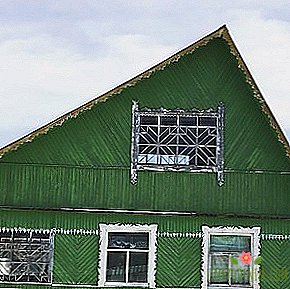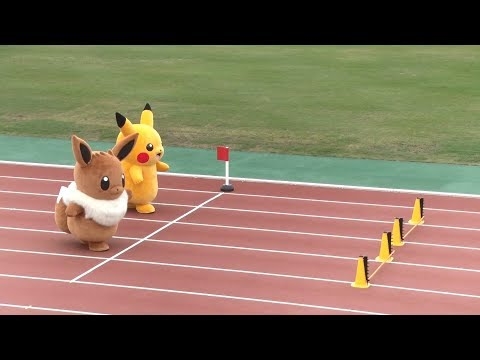"Cheburashka" or astrakhan fur: How did faux fur beat natural
No less relevant than down jackets and coats, this winter will be fur coats. Several designers showed both bright variants of colored acrylic, and classic brown of natural fur. The arguments of animal defenders and fur companies are increasingly emerging at the same time: some are against murder, others are against destruction by the synthetic of the environment. Artificial fur wins this season, but faith in the future of this trend has been shaken by many.

How it all began
"This article is not for you if you feel poor," - a phrase from the English-speaking Vogue of 1929 shows the role that luxury played in the first half of the 20th century. This statement supplied an article about fur coats that were meant to testify to the status and desired lifestyle. Manufacturers around the world have decided that every "simple" girl wants to look like a wealthy resident of Manhattan and Paris, and began to sew fur coats from "substitutes" that spread in the same 1929 year.
Initially, alpaca wool was used, but the quality of the fur coats from it was low, the colors were faded (they were usually dyed gray and brown), and the sophistication inherent in a mink or beaver coat was out of question. Impetus to the further development of production, however, gave a low price and high heat capacity. From year to year, manufacturers experimented with materials and colors until synthetics were first used for fur coats for the first time in the 50s.


Wool was replaced by modacryls, which are also obtained from petroleum products; fur coats are still sewn from ready-made synthetic fabrics. They are easier to paint and structure, they are durable, poorly absorb moisture and keep warm well, and still create the volume necessary to imitate fur. Dyes, silicones and resins are added to modacryls, which give smoothness and shine. Not without natural materials: synthetic fibers are sometimes combined with cotton and wool, which are also used for lining.
Some experts link the growing popularity of faux fur at the time with the struggle for animal rights. By the beginning of the first truly noticeable campaign in the 70s, “toy” fur coats were no longer considered as “fakes”, but as self-sufficient wardrobe items. “Killing an animal for a coat is a sin” and “a woman acquires status if she refuses to kill in order to get dressed ...” - such slogans were heard in one of the 1971 New York Magazine numbers. This was the first time that the stars began to speak on behalf of animal rights organizations: actresses Doris Day, Mary Tyler Moore, Angie Dickinson and others.
The 1994 PETA photo session turned out to be really provocative. She was headed by Naomi Campbell, the favorite of many designers who did not disdain to use natural fur, for example Prada. The campaign, in which, in addition to Naomi, several more models were shot, directly proclaimed: it is better to go naked than to wear the fur of dead animals.


What all led
Today, many designers refuse to natural fur. In the same 1994 Calvin Klein announced that he would no longer use animal skins in his collections - skeptics attributed this refusal to the PETA campaign, whose members broke into the New York office of the company that year. Stella McCartney, a staunch vegetarian, is considered to be one of the most consistent defenders of animals. From the very beginning she did not use natural fur in her collections, and in 2007 she refused to use natural leather. In 2014, a similar refusal was reported by Hugo Boss, explaining that “cruelty towards animals cannot be fashionable”.
Some designers admit that they do not adhere to strict prohibitions, but use artificial material to at least partially reduce the proportion of natural. “It’s hard to be part of a cycle where animals need to be constantly killed,” said Hussein Chalayan, for example. Others use artificial fur for aesthetic reasons. For example, Dries Van Notein confesses his love for him because of the feeling of “fake”. The designer came up with artificial fur coats back in the 90s, when, according to him, they were considered bad form. Leading designers have always been concerned primarily with the dichotomy of "good" and "bad" taste, and not the cheapness of the material.


Despite the fact that since the beginning of the 2000s, the struggle for animal rights has only gained momentum, and calls for rational consumption have become louder, the fashion for synthetics turned out to be irregular. According to the International Fur Federation (IFF), since 2011, sales of natural fur around the world have almost tripled: from 15.6 billion dollars to more than 40 billion in 2015. Moreover, former defenders of animals began to openly abandon their views: for example, Naomi Campbell more than once starred in "real" fur coats for advertising campaigns.
Even the latest loud statements by designers do not look so categorical. In October of this year, the president of Gucci, Marco Bizarri, announced that the brand will no longer use natural fur, because it is “not modern”. At the same time, the brand recently, at the suggestion of creative director Alessandro Michele, called for looking at natural material in a new way: in addition to brightly colored fur coats, loafers with fur insoles, which have been sparkling in street style styles for a couple of years, have become a hit.


To wear or not to wear
The production of artificial materials, and in particular fur, has two sides. On the one - it allows you to abandon the killing of animals, on the other - still causes significant damage to nature. As design consultant and researcher Kate Fletcher wrote in her book "Sustainable Fashion and Textiles", creating a kilogram of nylon requires three times more energy than a kilogram of cotton. And with each machine wash of synthetics, nearly 2000 microscopic particles are emitted into the water, which enter the reservoirs and ultimately harm both animals and people. However, it is difficult to find at least one fur thing made from organic materials, such as cotton or hemp, which would be grown without chemical impurities, both in the mass market and in the premium segment stores.
Everyone decides what to choose, but do not forget about the rules of reasonable consumption. In order for a thing to cause as little harm to the environment as possible, you need to either dispose of it properly, return it for recycling, or repartition. Take the bored in the second-hand, give it to your friends or put it on the mezzanine until the moment when the mod returns to normal. It is also worth buying wisely: both artificial and real fur can be found in vintage stores. In fashion today it is an artificial option; For example, this spring Stella Jean was complemented with notable brooches. “Cheburashka” are not ceasing to be relevant: interesting combinations of classic style and “trimmed” material can be seen, for example, in Jil Sander and Max Mara.
Photo: Topshop, Zara, Paul & Joe, Balenciaga





